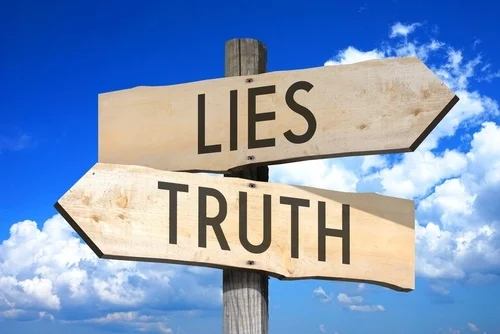And, having managed countless flagship report processes and input into advisory sessions over the years, I often get asked: “How hard is it to get an analyst to refer us on to their clients?” and “How do I get these analyst reports to quickly translate into a commercial result?”
Let’s establish some quick AR working terms to make sure we’re all on the same page.
Analyst verbatim quote
When an analyst report, blog or pre-approved analyst firm content is referenced by a company or brand in its own right. Requires consent, or an agreed citation request that is agreed to in advance. Won’t be a recommendation in its own right but totally free to request via your AR rep!
Strategy days, also known as SAS days
A half or full-day where the analyst or their team present to the management team on a given topic and reference their own research, and those execs emerge dazed and confused but armed with new product positioning messages in their arsenal. Can unwind into a long in-depth consulting/company brainstorming session. Very important to the product marketing community and counts as custom research with its own price tag.
Analyst inquiry
Usually a 30-minute, rapid fire session to ask the analyst their views on your market. A commercial service, clients of this service (and it is a paid-for service) may ask for clarification on competitive position, but it’s not an opportunity to ask for an endorsement. It is a good opportunity to ask them if they know enough about your strategy or require more. Usually comes as part of a paid for model with an analyst firm.
Analyst RFI or research interview request
A request for interview is a standard analyst outreach whose sole purpose is to collect written information about the capabilities of various suppliers, or a given vendor. Normally it follows a format that can be used for comparative purposes.
Now that we’re clear on terms, let’s bust some persistent myths pervading the practice of analyst relations and perceptions of analyst roles.
True or false: Analysts mentioning you (or referencing your strategy) in a report are the same as an outright endorsement.
No! An industry analyst never endorses a company, product or strategy overtly.
However, since being knowledgeable about the market is a prerequisite for being an analyst, they can provide their viewpoint and referrals during advisory sessions, inquiry calls and during other advisory-led projects. So, in summary an analyst may feed into the short-listing referrals process but doesn’t direct the process.
True or false: Just getting mentioned in an analyst report is enough. Stop there and tweet it.
Sure, but there are things you can do to amplify analyst coverage.
When they feature you in a report, however, analysts are careful not to endorse any vendor, or to pit one against the other. Don’t think that just because they mention you in a report, you’ll receive a flurry of inbound calls. You may well do, but you need to promote and amplify this content. Getting those re-cap notes and / or forecasting figures can be key to your next quarter’s company performance.
If you are an AR/marketing representative – help your team by creating social or paid content that can drive awareness of the brand and puts you on the map for the relevant buying audience.
True or false: During an analyst-vendor SAS day or paid-for strategy session, analysts rank you against your top competition.
Totally…. false. An analyst is usually asked to prepare answers to very specific, strategic questions and offer advice based on those questions at a SAS day, based on what they know (based on research and analysis) and what they’re seeing from a wider market context.
What they will not do in one of these sessions is prepare a close competitive ranking based on your current strengths or weaknesses. That’s really what your Markets Intelligence team is for. An analyst friend points out that they do produce rankings as part of a syndicated research programme or as a one-off custom research request, but that would be part of the advisory effort (and cost) of a SAS session.
My advice would be to do a lot of prep before a SAS day session – share questions in advance, be very clear on outcomes, and ensure everyone from your side knows why they are in the room.
True or false: During an analyst inquiry session, an analyst is asked his or her opinion on the state of the market, including who the newer entrants to an incumbent’s market are.
Totally true, and not coming prepared with questions or just asking for a general update does your team a disservice!
Industry analysts operate in a commercial context, and as such, are asked about new and incumbent players all the time. But an inquiry session is meant to be where they seek to be helpful and provide additional guidance based on their own specific industry knowledge and is outside of briefings where the rules of engagement are far stricter.
However, candid conversations at trade shows or insider-only events is often where the names of major new and emerging players are constantly coming up especially if they make a big splash.
True or false: An analyst cares about the information you offer so don’t stonewall or block a sincere request?
True, but before going down this road: get your internal AR house in order. Aim to standardise your processes by aiming to reply within a day or so to keep up a good working relationship.
If you’re drowning in frequent AR requests, create an Analyst website or easy-to-access “About Us” portal just so analysts have a minimum starting point with you. Make any AR interaction worth the analyst’s time, by not leaving them wanting more.
Email frequent updates and arm your AR reps with the right information to keep them up-to-date.
If you need more ideas on effectively measuring AR campaigns, my colleague Julia produced a wonderful blog for the IIAR with findings from a webinar with Oracle’s Gerry Van Zandt: http://analystrelations.org/2018/06/01/effective-measurement-are-we-there-yet/ in June. Check it out!
















